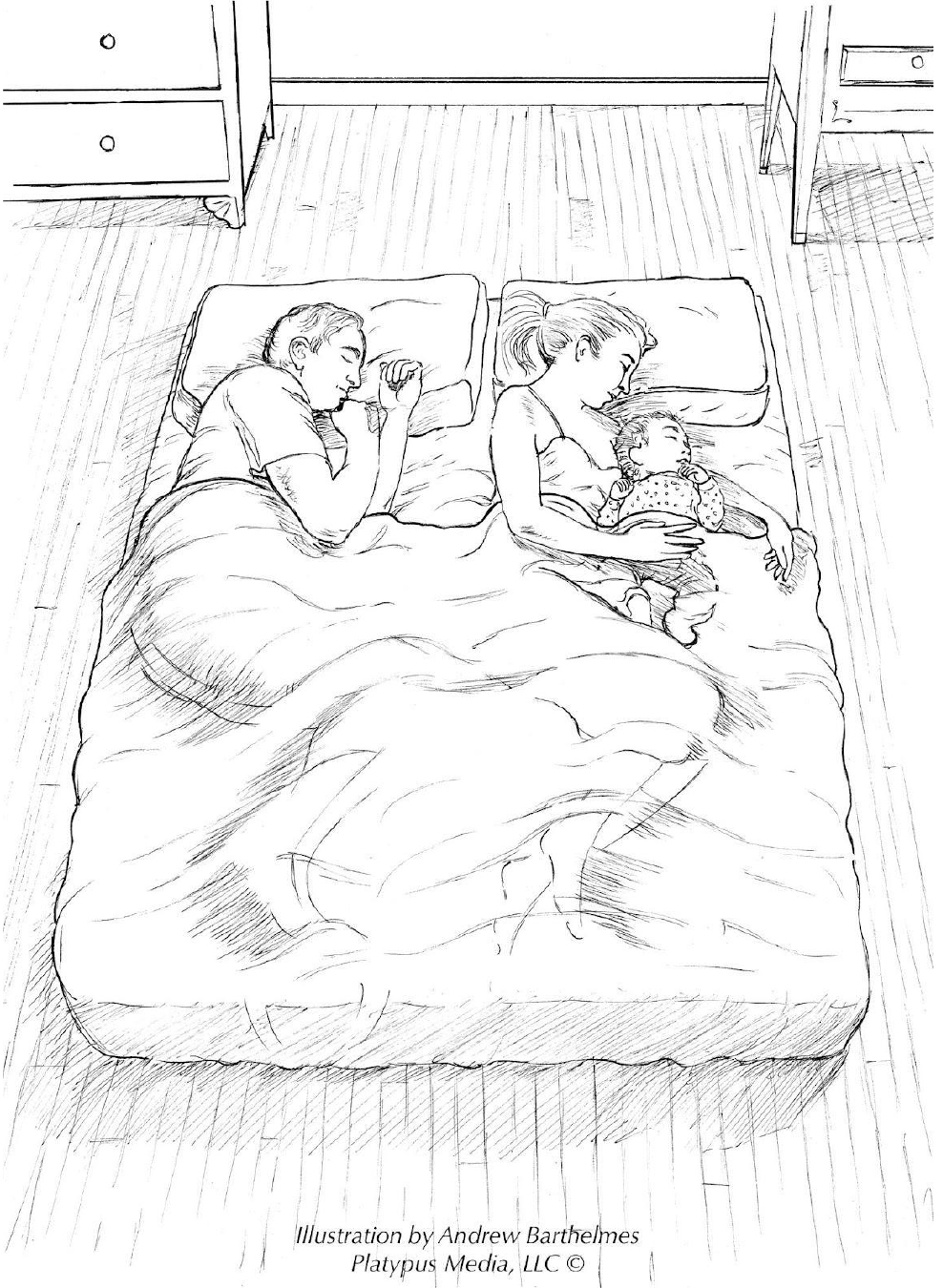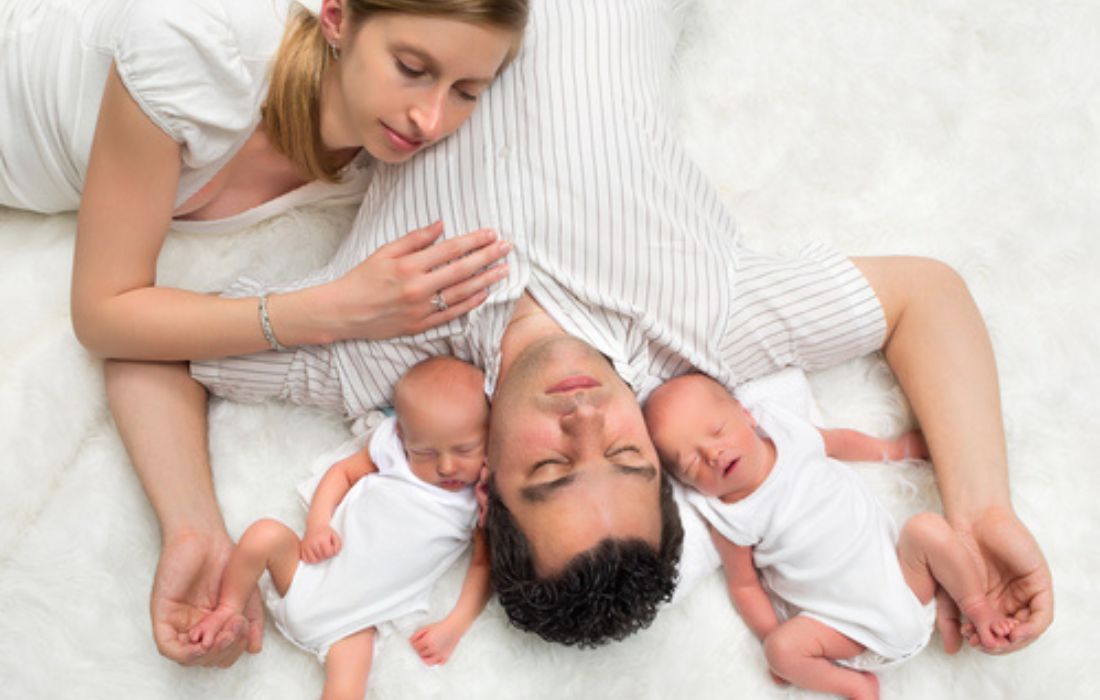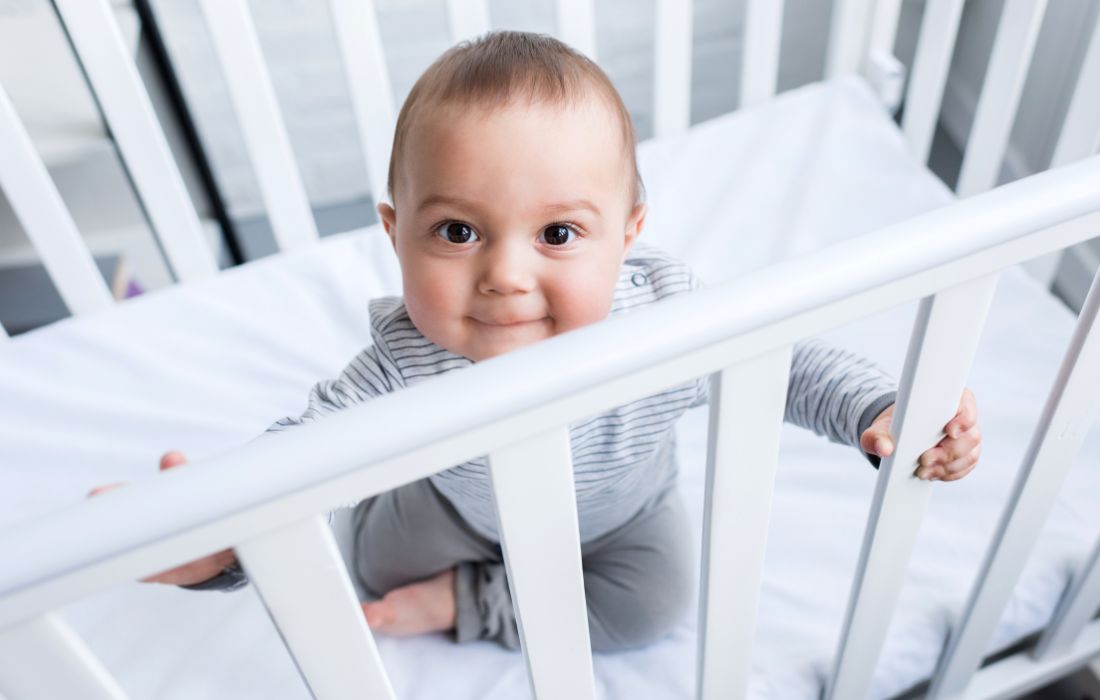The Best Way To Safely Co-Sleep with Your Newborn & Insight On The Impact
The topic of co-sleeping and whether the risks outweigh the benefits of co-sleeping with your newborn or baby is hotly debated in the world of infant sleep. Co-sleeping with your newborn is different from room sharing, which is having the baby sleep in the same room but in a separate bed.
The American Academy of Pediatrics (AAP) and the U.S. Consumer Product Safety Commission (CPSC) have formally recommended against co-sleeping/bedsharing for a child under age 2 because of the increased risk of death or injury from suffocation, strangulation, or entrapment.
However, according to one study, 60 percent of new parents co-sleep or share a bed with their baby in the first year of life. Knowing this is a reality, I want parents to know how to safely co-sleep with their newborn.
What works for one family might not work for another, and you need to know the best information to make the most informed choice for your family. Let’s learn more about co-sleeping.
get the interactive
newborn sleep
digital planner
for better nights
and happier days
The Easiest Way To Look At Safe Co-Sleep For Your Newborn
Instead of co-sleeping, many families use a “sidecar” or “co-sleeper” crib that can be placed right up against the parents’ bed. It has rails and safety measures while allowing the closeness that many babies (and parents) crave in the first several months.
If you do have your baby sleep in your bed, your co-sleeping setup must be safe:
- Your mattress must be firm, with no pillow top.
- You must keep the bed free of pillows and loose blankets.
- You and your partner must agree that this is how your newborn will sleep.
- An infant should never be placed in bed with a sleeping adult who is not aware the infant is there.
While it seems standard and basic, it’s important to take this information seriously. Co-Sleeping can be done successfully when you apply these rules.
A Biological Anthropologist’s Take on Safe Newborn Sleep
James J. McKenna is a professor of biological anthropology and the director of the Mother-Baby Sleep Laboratory at the University of Notre Dame. He’s famous for his advocacy of safe co-sleeping in the United States (where it’s less common than elsewhere in the world).
Through anthropological studies, Dr. McKenna found that parent and baby heart rates, brain waves, sleep states, oxygen levels, temperature, and breathing influence each other when they sleep near one another.
In his book Safe Infant Sleep, Dr. McKenna suggests safe co-sleeping with a newborn or baby setup that includes:
- Parents who do not smoke
- Sober parents
- Caretakers have chosen to bedshare
- Breastfeeding
- Bed frame has been completely removed
- Mattress has been placed at the center of the room away from walls and furniture
- Light blankets and firm, square pillows are being used
- No older children, pets, or stuffed animals are in the bed
Dr. McKenna’s sleeping environment recommendations, as you can see, differ slightly from First Candle’s and ours. Note that the mattress is on the floor!
British co-sleeping expert Helen Ball, BSc, MA, Ph.D., suggests that a nursing mother sleeps on her side with her arm out above her baby’s head (keeping pillows and blankets far away from the baby). This position allows the baby to nurse easily and safely at night.

We believe it’s important to share as much knowledge surrounding the topic — so you can make an informed decision as a parent. Next, let’s dive into the type of co-sleeping.
3 Types of Co-Sleeping That End up Happening With Your Newborn
I find that my co-sleeping parents fall into three main groups: Committed Co-Sleepers, Short-Term Co-Sleepers (the “We Started but Now Need to Transition” group), and Accidental Co-Sleepers, plus my own term called Reactive Co-Sleepers.
Committed Co-Sleepers
Some families decide before their little one is born that co-sleeping is right for them, and they set up their sleep space for safe co-sleeping with their newborn. Once their baby arrives, everyone seems happy with the arrangement.
I encourage these families to eventually have their baby nap in a non-cosleeping arrangement. This allows their nap plan to be longer-term and more sustainable, especially if they don’t plan to co-sleep for a longer period of time. It will also keep the crib or bassinet from becoming a completely foreign location for the baby. Believe it or not, you will likely want the flexibility of napping separately one day!
Short-Term Co-Sleepers
Some families think co-sleeping is for them, but once their baby arrives they find that it doesn’t work for the baby or them. Believe me, that’s okay! It’s got to work for everyone.
If you find after your baby arrives that you need to transition them out of your bed, you can check out my transition steps in the Sleep section of Month 5 in my new book The Sleep Lady’s Gentle Newborn Sleep Guide.
Accidental Co-Sleepers
Some parents co-sleep out of desperation. The first few months of a baby’s life can be a time of sleep deprivation for everyone. Parents end up co-sleeping because they’re understandably doing the best that they can to get their baby and themselves to sleep.
In this case, the baby has their own sleep space, but the parents bring the baby into their bed after particularly fussy periods and multiple wakings throughout the night.
These co-sleepers need to be careful that their sleep space is safe for their baby. I recommend creating a backup plan that allows you to co-sleep with your newborn safely in case this happens to you. And if you find yourself in this camp once your baby comes and it’s not working for you, my book can help guide you.
Reactive Co-Sleeping
If you’re worried that you’ll end up doing accidental co-sleeping, or what I also call “reactive co-sleeping,” I recommend you create a backup plan. You’ll want to make sure that you’re not bringing the baby into your bed and accidentally falling asleep if your bed is not safe for co-sleeping. The same goes for feeding or nursing on a sofa and accidentally falling asleep.
One option includes putting a futon or twin mattress on the floor of your baby’s room for feeding during the night (follow the safe co-sleeping guidelines, of course). That way if you both fall asleep you don’t have to worry about dropping your baby if you are in a rocker or having the baby fall off your chest if you’re sitting on a couch. They also won’t be in danger of suffocating in a bed with pillows, blankets, and quilts.
get the interactive
newborn sleep
digital planner
for better nights
and happier days



